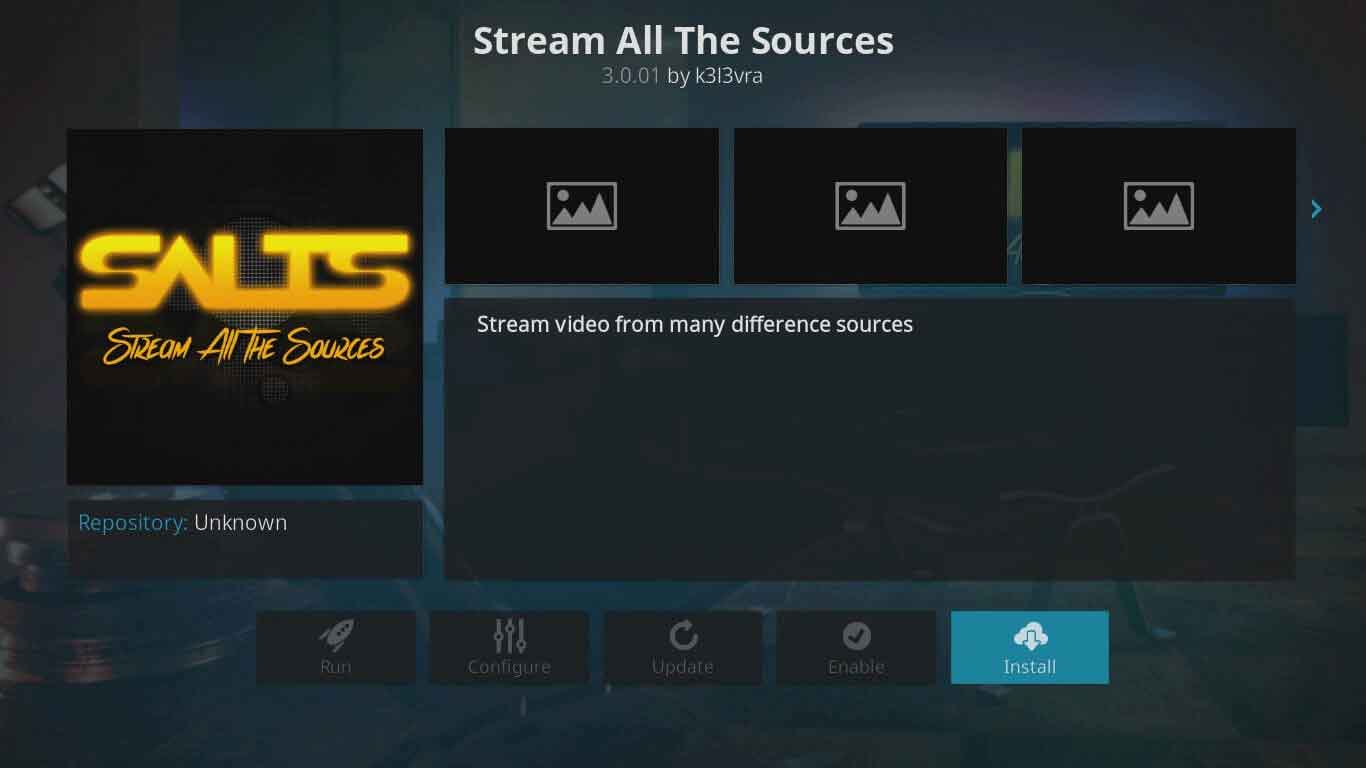Introduction
When it comes to coding, managing and organizing your files and projects can be a daunting task. With the ever-evolving nature of software development, it’s essential to have a system in place that allows for efficient collaboration, version control, and tracking changes. This is where a repository, commonly known as a “repo,” comes into play.
A repo, short for repository, is a central location where you can store and manage your software projects. It acts as a centralized hub that tracks changes, allows collaboration among team members, and provides a history of modifications made to the code. In simple terms, a repo is like a digital filing cabinet for your code, ensuring that everything is organized, accessible, and secure.
Whether you’re working on a personal project or collaborating with a team, using a repo is highly beneficial. Repositories can be hosted either locally on your computer or on remote servers, making it easy to share your codebase and collaborate with others. They create a structured environment that promotes effective development practices, such as version control and code review.
There are different types of repos available, each serving a specific purpose. Some common types include version control systems like Git, centralized repositories like Subversion (SVN), and hosting platforms such as GitHub and Bitbucket. These repositories offer various features and workflow options, depending on your specific needs and preferences.
Implementing a repo in your coding workflow brings several advantages. Firstly, it allows for easy collaboration, as team members can work on the same codebase simultaneously and merge their changes seamlessly. It also ensures that your code is backed up and protected, with the ability to roll back to previous versions if needed. Additionally, repos provide a streamlined approach to project management and documentation, making it easier to track progress, assign tasks, and maintain a clear history of code revisions.
In this article, we will explore the different types of repositories, highlight their benefits, and discuss best practices for using repos in your coding projects. Whether you’re a beginner or an experienced coder, understanding the importance of repos and how to effectively utilize them can significantly enhance your development workflow and collaboration capabilities.
Definition of a Repo
A repo, short for repository, is a centralized location where you can store and manage your software projects. It serves as a version control system that keeps track of changes made to your codebase, allowing you to view previous versions, collaborate with others, and roll back to earlier stages if needed. Think of it as a digital library that houses all your project files, ensuring that everything is organized and accessible.
The concept of a repo revolves around the idea of storing your code in a structured manner. Instead of having scattered files and folders, a repo provides a unified and organized structure for your project. It acts as a virtual workspace where you can create, edit, and manage your codebase efficiently.
Within a repo, you can have multiple branches. Each branch represents a different path of development, allowing you to work on different features or bug fixes simultaneously without affecting the main codebase. This branching mechanism enables collaborative coding, as team members can work on their own branches and merge their changes into the main branch once they are ready.
One of the most popular version control systems used for creating and managing repositories is Git. Git provides a distributed and decentralized approach to version control, allowing developers to work offline and collaborate seamlessly. It offers powerful features such as branching, merging, and conflict resolution, making it a preferred choice for many development teams.
Repositories can be hosted in various ways. You can choose to have a local repository stored on your computer, which is useful for personal projects or when working offline. Alternatively, you can host your repository on remote servers using platforms like GitHub, Bitbucket, or GitLab. Remote hosting provides additional benefits such as easy collaboration, backup and recovery options, and the ability to showcase your projects to the wider community.
In a nutshell, a repo is a central hub that manages and organizes your software projects. It combines version control, collaboration, and organization into a single solution, ensuring that your code is secure, accessible, and up-to-date. Understanding the concept of repos and how they function lays the foundation for efficient coding practices and successful project management.
Why Use a Repo
Using a repository, or repo, offers numerous advantages for software development projects. Whether you are working on a solo project or collaborating with a team, incorporating a repo into your workflow can greatly streamline the development process and improve efficiency. Here are some key reasons why you should consider using a repo:
- Version Control: Repositories provide robust version control capabilities, allowing you to track and manage changes made to your codebase. This means that you can easily view previous versions, compare changes, and revert to earlier stages if necessary. This ensures that your project’s code history is maintained and that any mistakes or unintended modifications can be rectified.
- Collaboration: Repositories enable collaborative development, making it easy for multiple developers to work on the same codebase simultaneously. With features like branch management and merge capabilities, team members can work on different features or bug fixes without interfering with each other’s progress. Repositories also facilitate code review, allowing developers to provide feedback and make suggestions for improvements.
- Code Organization: Repositories provide a structured and organized environment for your codebase. Instead of having scattered files and folders, a repo allows you to neatly organize your project files, making it easier to locate specific code components. This organization enhances code readability and maintainability, especially as the project grows in size and complexity.
- Backup and Recovery: Repositories act as a backup mechanism for your code. With a repo, your codebase is stored in a secure and centralized location, reducing the risk of data loss or corruption. In the event of accidental file deletion or code errors, you can easily revert to a previous version of your code. This ensures that your work is protected and minimizes the chances of catastrophic code loss.
- Code Reusability: By using a repo, you can easily reuse code components across different projects. Instead of rewriting code from scratch, you can extract reusable code modules from your repo and apply them to new projects. This saves time and effort and promotes code consistency across your development endeavors.
Overall, repositories provide a structured and efficient approach to software development. They promote collaboration, help maintain code integrity, and facilitate seamless project management. Whether you are a solo developer or part of a team, incorporating a repo into your workflow can greatly enhance your coding experience and contribute to the success of your projects.
Types of Repos
When it comes to repositories, there are different types available, each with its own unique features and use cases. Understanding the different types of repos can help you choose the most suitable one for your specific needs. Here are some common types of repositories:
- Git Repositories: Git is a popular distributed version control system widely used in software development. Git repositories are decentralized and allow for easy collaboration among team members. With Git, each developer can have their own local repository to work on and make changes. These changes can then be merged into a central repository, which acts as the main codebase. Git repositories provide powerful branching and merging capabilities, making it easy to manage multiple lines of development within a project.
- Subversion (SVN) Repositories: Subversion, commonly referred to as SVN, is a centralized version control system. Unlike Git, which creates distributed repositories, SVN repositories have a central server that stores the codebase. Developers update their local copies from the central repository and commit their changes back to it. SVN repositories are known for their simplicity and ease of use, making them a popular choice for centralized version control in organizations.
- Hosting Platforms: There are several popular hosting platforms available that provide repositories as a service. Examples include GitHub, Bitbucket, and GitLab. These platforms offer both Git and SVN repositories, giving you the flexibility to choose the version control system that best suits your needs. Hosting platforms provide a variety of collaboration features, such as issue tracking, pull requests, and code review, making them ideal for both individual developers and teams.
- Local Repositories: Local repositories are stored on your local machine, allowing you to work on your codebase offline. Tools like Git allow you to create and manage local repositories, enabling you to track changes and collaborate with others when needed. Local repositories are commonly used for personal projects, prototyping, or when an internet connection is not readily available.
Each type of repository has its own strengths and considerations. The choice of repository type depends on factors such as the nature of the project, team size, collaboration requirements, and personal preferences. It is important to evaluate these factors and choose the repository type that best aligns with your specific needs.
Ultimately, regardless of the type of repository you choose, having a centralized location to store and manage your codebase is essential in ensuring efficient collaboration, version control, and code integrity in your software development projects.
Benefits of Using a Repo
Using a repository, or repo, in your coding projects offers a range of benefits that significantly improve the development process and collaboration experience. Here are some key advantages of using a repo:
- Version Control: Repositories provide robust version control capabilities, allowing you to track changes made to your codebase. This ensures that you always have an organized history of your project’s development, with the ability to view previous versions and easily revert to earlier stages if needed. Version control helps maintain code integrity, enhances collaboration, and simplifies issue tracking and bug fixing.
- Code Collaboration: Repositories facilitate seamless collaboration among team members. With a repo, multiple developers can work on the same codebase simultaneously without interfering with each other’s changes. Git repositories, for example, enable branching and merging, allowing developers to work on their own features or bug fixes and merge their changes back into the main codebase. This promotes team productivity, fosters effective communication, and enables efficient code review processes.
- Code Organization: Repositories provide a structured environment for your codebase, promoting organization and clarity. Instead of having scattered files and folders, a repo allows you to neatly organize your project files, making it easier to locate and manage specific code components. This organization enhances code readability and maintainability, especially as the project grows in size and complexity.
- Backup and Recovery: Repositories act as a backup mechanism for your code. With a repo, your codebase is stored in a secure and centralized location, reducing the risk of data loss or corruption. If a mistake occurs or files are accidentally deleted, you can easily revert to a previous version of your code. This ensures that your work is protected and minimizes the chances of catastrophic code loss.
- Code Reusability: Repositories promote code reusability and modularity. By organizing your codebase in a repository, you can easily extract reusable code modules and apply them to new projects. This saves time and effort, encourages code consistency, and enhances overall development efficiency.
- Project Management: Repositories provide a structured approach to project management. With features like issue tracking, task assignment, and code documentation, you can track project progress, assign responsibilities, and ensure that important project details are readily available. Repositories also allow for effective code review processes, enabling you to maintain code quality and identify potential issues before they become problematic.
By utilizing a repo in your coding workflow, you can enhance collaboration, improve code organization, streamline project management, and ensure code integrity. Whether you are working on personal projects or collaborating with a team, the benefits of using a repo are invaluable in enhancing the efficiency and success of your development endeavors.
Common Repositories
There are several commonly used repositories and hosting platforms that offer version control services and facilitate collaboration among developers. These repositories provide a centralized location for storing and managing codebases. Let’s take a look at some of the most widely used ones:
- Git: Git is one of the most popular distributed version control systems used by developers worldwide. It allows for efficient collaboration and provides powerful branching and merging capabilities. Git repositories can be hosted locally or on remote platforms like GitHub, GitLab, and Bitbucket.
- GitHub: GitHub is a web-based hosting platform built around Git. It offers a wide range of features, including code collaboration, issue tracking, and code review. GitHub provides a user-friendly interface, making it easy for developers to share code, contribute to open-source projects, and showcase their work to a wider audience.
- Bitbucket: Bitbucket is another widely used hosting platform for repositories. It supports both Git and Mercurial version control systems. Bitbucket provides excellent integration with other development tools and offers features such as code collaboration, issue tracking, and continuous integration and deployment options.
- GitLab: GitLab is a comprehensive DevOps platform that includes version control capabilities. It offers features similar to GitHub and Bitbucket, such as code collaboration, issue tracking, and continuous integration. GitLab allows users to host repositories on their own infrastructure, giving them more control over their codebase and data.
- Subversion (SVN): Subversion, commonly known as SVN, is a centralized version control system. SVN repositories are hosted on a central server, with developers updating their local copies from the server and committing changes back to it. SVN is known for its simplicity and ease of use.
These repositories provide developers with a range of options for managing their codebases and collaborating with others. The choice of repository depends on factors such as personal preference, team requirements, and project needs. Whether you choose Git-based repositories like GitHub or Bitbucket or opt for a centralized system like SVN, having a repository in place ensures efficient version control, streamlined collaboration, and effective project management.
How to Set Up a Repo
Setting up a repository, regardless of the type or hosting platform you choose, generally involves a few common steps. Here is a general overview of how to set up a repo:
- Choose a Version Control System: Before setting up a repository, decide which version control system (VCS) you will use. Git and SVN are popular choices, each with its own strengths and considerations.
- Choose a Hosting Platform: If you plan to use a remote repository, select a hosting platform that supports your chosen VCS. Popular options include GitHub, Bitbucket, and GitLab. Create an account on the chosen platform if you don’t have one already.
- Create a New Repository: Once you have a hosting platform account, you can create a new repository. Provide a meaningful name and description for your repo to help others understand its purpose.
- Define Repository Settings: Configure the repository settings according to your requirements. This may include setting up branch protection rules, enabling issue tracking, or specifying access permissions for collaborators.
- Clone the Repository: To start working with the repository locally, clone it to your computer. This creates a local copy of the repository on your machine.
- Add and Commit Files: Add your project files to the local repository and commit them. This creates a new version of your codebase in the repository history.
- Push Changes to Remote: Once you have committed your code changes locally, push them to the remote repository. This updates the codebase on the hosting platform, making it accessible to others.
The specific steps for setting up a repository may vary based on the hosting platform and version control system you choose. It’s important to consult the documentation and resources provided by your chosen platform for detailed instructions tailored to your needs.
By following these steps and setting up a repository, you establish a centralized and organized environment for your project. This ensures that your codebase is safely stored, easily accessible, and ready for collaboration and version control.
How to Use a Repo
Once you have set up a repository for your project, you can start utilizing it in your coding workflow. Here are the fundamental steps to effectively use a repo:
- Clone the Repository: To begin, clone the repository to your local machine. This creates a local copy of the codebase that you can work with.
- Branch Management: Before making any changes, create a new branch from the main branch to work on your specific feature or bug fix. This keeps the main branch stable and allows for parallel development.
- Edit and Modify: Make changes and edits to your code within the local copy of the repository on your machine. Use your chosen text editor or integrated development environment (IDE) to make modifications to the codebase.
- Commit Changes: Once you have made the desired changes, commit them to your local branch. Commits serve as checkpoints in the version control history, allowing you to track your progress and revert changes if necessary.
- Push to Remote: After committing your changes locally, push them to the remote repository. This updates the codebase on the hosting platform, making your changes visible and accessible to others.
- Pull and Merge: If other team members have made changes to the repository, pull those changes to your local branch. This ensures that you have the latest version of the codebase. Merge any conflicting changes to resolve conflicts and maintain code consistency.
- Review and Testing: Before merging your changes into the main branch, review your code and perform necessary testing to ensure it functions as intended. This includes checking for bugs or errors and ensuring that new additions align with project requirements.
- Merge and Deploy: Once you are satisfied with your changes, merge your branch into the main branch. This incorporates your changes into the stable codebase. Depending on your workflow and project requirements, deploy the updated code to your production environment.
These steps provide a general outline of how to use a repository effectively. The exact process may vary depending on the version control system and hosting platform you are using. It is important to familiarize yourself with the specific features, commands, and workflows of your chosen repository to maximize its benefits.
By following these steps and utilizing the features of your chosen repository, you can ensure efficient version control, smooth collaboration, and effective project management in your coding projects.
Best Practices for Working with Repos
Working with a repository requires adherence to certain best practices to ensure smooth collaboration, effective version control, and efficient project management. Here are some key best practices to follow when working with repos:
- Use Descriptive Commit Messages: When making commits, provide clear and concise commit messages that describe the changes made. It helps other team members understand the purpose and context of each commit.
- Branch for Each Feature or Bug Fix: Create a separate branch for each feature or bug fix. This allows for parallel development, prevents conflicts, and makes it easier to track changes specific to each feature or bug fix.
- Regularly Pull and Merge Changes: Pull changes made by other team members into your local branch regularly to stay up to date. This ensures that you are working with the latest version of the codebase and reduces conflicts during merging.
- Perform Code Reviews: Review code changes made by other team members before merging them into the main branch. Code reviews help identify potential issues, promote code quality, and ensure consistency across the project.
- Test Before Committing: Before committing code changes, test your modifications thoroughly to ensure they function as expected. This helps catch any bugs or errors before they are merged into the main branch.
- Communicate and Collaborate: Maintain open and frequent communication with other team members. Discuss design decisions, share ideas, and clarify requirements to ensure a cohesive and successful development process.
- Regular Backups: Although repositories provide version control, it is still important to regularly back up your projects. This can be done by creating backups of the repository or by using additional cloud storage or backup solutions.
- Follow Code Organization and Structure: Maintain a consistent and organized code structure within the repository. Use directories and folders to categorize different components of the project, making it easier for collaborators to navigate the codebase.
- Document Changes and Updates: Add meaningful comments or documentation to your codebase, explaining the purpose and functionality of different sections. This helps others understand the code easily and serves as a reference for future modifications or troubleshooting.
- Update README and Documentation: Keep the README file and project documentation up to date. Provide clear instructions on how to set up the project, run tests, or contribute to the codebase. This helps new team members get started quickly and ensures that project information is readily available.
By following these best practices, you can establish a solid foundation for effective collaboration, streamline version control processes, and maintain the overall code quality in your repository. Emphasizing these practices helps create a conducive environment for successful software development projects.
Conclusion
Utilizing a repository (repo) in your coding workflow is crucial for efficient project management, version control, and collaboration. Whether you are working on a personal project or collaborating with a team, repositories provide a structured and organized environment to store and manage your codebase.
In this article, we explored the definition of a repo and its importance in the coding world. We discussed how repositories enable version control, streamline collaboration, and ensure code integrity. By setting up a repo, you establish a centralized hub for your code, making it easier to track changes, revert to previous versions, and work alongside others.
We also explored different types of repositories, including Git, Subversion (SVN), and hosting platforms like GitHub, Bitbucket, and GitLab. Each type offers unique features and workflows, allowing you to choose the one that aligns best with your specific needs.
Furthermore, we highlighted the benefits of using a repo, such as version control, collaboration, code organization, backup and recovery, and code reusability. Implementing a repository in your coding projects enhances efficiency, fosters effective teamwork, and provides a structured approach to development.
To effectively use a repo, we discussed the fundamental steps involved, including cloning the repository, branching, committing changes, and merging. Following best practices such as using descriptive commit messages, regular communication, code reviews, and maintaining code organization further enhances the productivity and success of coding projects.
In conclusion, repositories serve as the backbone of software development, providing a centralized and organized approach to managing codebases. By harnessing the power of repositories, you can streamline collaboration, ensure version control, and optimize project management in your coding projects. Embracing repositories as an integral part of your workflow will undoubtedly contribute to more efficient and successful coding endeavors.

























